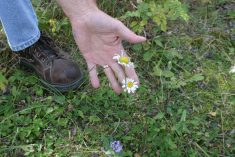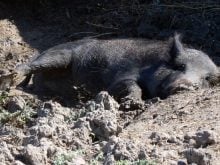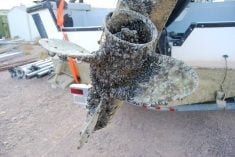It was bird buffet at Frank Lake east of High River, Alta., this spring. Gulls, mergansers and other waterfowl filled their bellies with Prussian carp.
And since Prussian carp are an invasive species, the birds are doing their part to reduce the population of these fish, which are now found in southern Alberta and parts of Saskatchewan.
Nicole Kimmel, aquatic invasive species specialist with Alberta Environment and Parks, said spring generally brings a wealth of reports on the carp because they tend to congregate in large numbers and are easily seen.
Read Also

Farming Smarter receives financial boost from Alberta government for potato research
Farming Smarter near Lethbridge got a boost to its research equipment, thanks to the Alberta government’s increase in funding for research associations.
It isn’t certain how the carp entered Alberta and Saskatchewan waters but because they are a species of goldfish and can be used as feeder fish in aquariums, people likely released them. In the wild, they are a threat to native aquatic ecosystems and native fish habitat.
Breeding populations have established across Alberta in some ponds and lakes as well as the Bow, Rosebud, Red Deer and South Saskatchewan rivers and their tributaries.
The hardy fish can survive in poor quality water for long periods and can rapidly reproduce. Kimmel said females can use sperm of related fish to fertilize their eggs, and can also produce genetically identical versions of themselves. As well, the carp can spawn multiple times in a season.
“Prussian carp pose threats to native fish populations by outcompeting native species for food and habitat, as well as spreading new diseases and pathogens,” said Jess Sinclair, press secretary to Environment and Parks Minister Jason Nixon, in an emailed response to queries.
“They are easily spread from one water body to another, and it is extremely costly and difficult to try and manage, contain and destroy them once they have become established. It is also illegal to move live fish from one water body to another. Penalties for illegally transferring fish can be up to $100,000 and/or a year in prison.”
Kimmel said there is no fishing limit on Prussian carp, although anglers do need a licence. Fishers are asked to catch and kill the fish, one of the few control measures available given the carp’s current widespread locations.
It’s possible for people to eat Prussian carp, although Kimmel said she hasn’t heard of anyone doing that. Like others in the carp family, the Prussian species is bony.


















